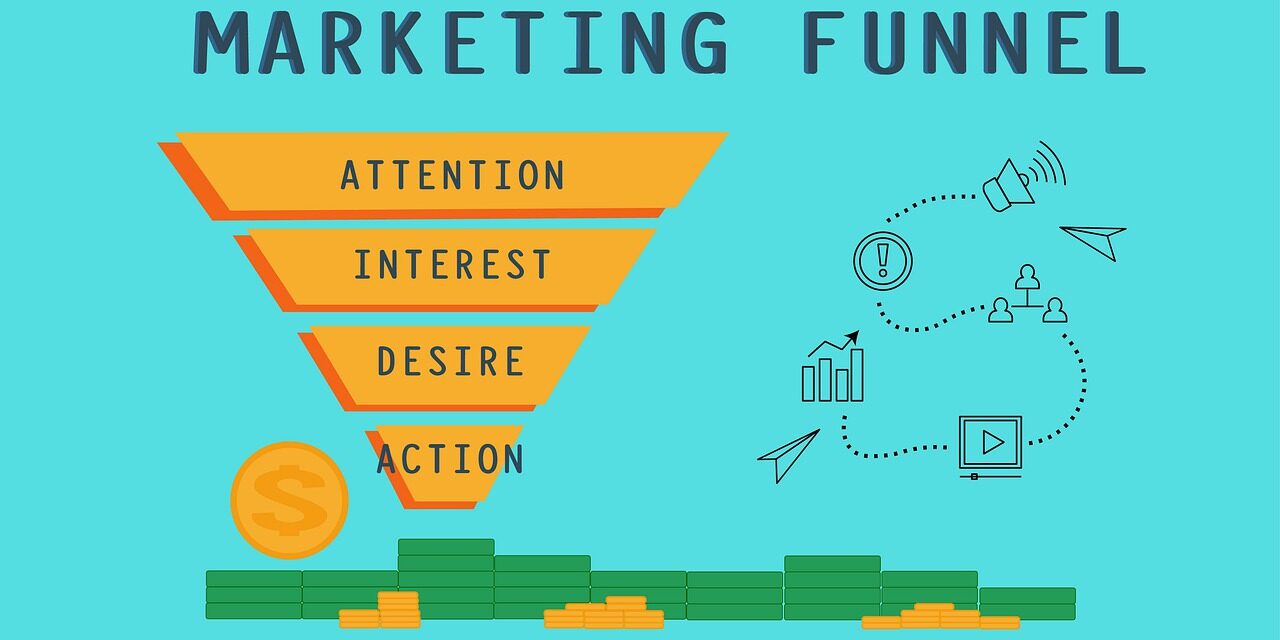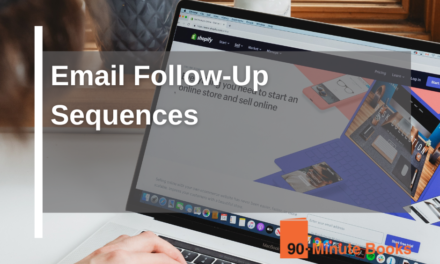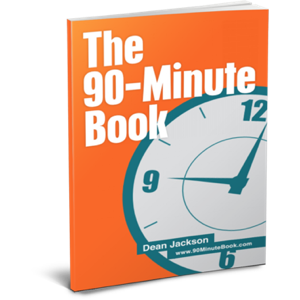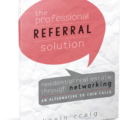Do you know what your marketing funnel looks like?
If not, you’re probably missing out on potential customers and sales. Statistics from Salesforce reveal that most (68%) businesses have yet to determine their marketing funnel. Those that do stand to see results, though. A strategy of creating “how-to” guides is successful in most cases, as determined by Semrush, with 72 percent of marketers citing it as a top-of-funnel approach.
In this article, let’s talk about the various phases of the marketing funnel and what should be done to drive more leads and sales at each of them. Additionally, we’ll provide advice on marketing funnels to assist you with converting a greater number of leads.
What Are the Marketing Funnel Stages?
Different companies have various different marketing funnel stages. The idea of HubSpot’s Flywheel model has recently become very fashionable.
For the purpose of this post, here are the main stages of the marketing funnel:
- Top of Funnel: Awareness/Attention
- Middle of Funnel: Interest/Consideration
- Bottom of Funnel: Intent/Action
- Post Funnel: Loyalty/Advocacy
1. Awareness/Attention
Understanding is the initial phase of the marketing funnel, and it is a significant one. A Content Marketing Institute poll determined that almost nine out of ten (88%) marketers believe content marketing is the most successful way to increase brand recognition.
When potential customers are familiar with your brand or product, that is referred to as brand awareness. For instance, somebody could discover your ad on social media, or your website may be among the results of a search.
The main goal in the awareness stage is to ensure that your brand is seen by many people. This can be accomplished by participating in practices such as producing content, optimizing search engines, promoting on social media platforms, and purchasing advertising space.
2. Interest/Consideration
The second step in the marketing funnel is arousing interest or thoughtfulness. At this point in the marketing process, folks are familiar with your company and actively seeking more information. They may have encountered one of your blog entries, observed a video concerning your product, or explored your website.
At this point, it’s essential to keep offering prospective customers informational material to enable them to understand your product or service more. You can achieve this goal by creating blog posts, videos, infographics, case studies, electronic books, and webinars.
3. Intent/Action
The third step of the marketing process involves demonstrating an intent or taking action. At this point in the marketing strategy, people who are potential buyers are showing interest in your item or service and thinking about buying it. They could potentially purchase your item or request a demonstration for additional details.
4. Loyalty/Advocacy
The last step in the marketing funnel is fostering loyalty and creating brand advocates. According to the Content Marketing Institute Survey, most marketers (78%) agree that content marketing can increase brand loyalty successfully.
At this point, consumers have bought and are now employing your product or service. At this point, you must keep supplying your clients with beneficial material and help. This will guarantee that they continue to be committed supporters of your company.
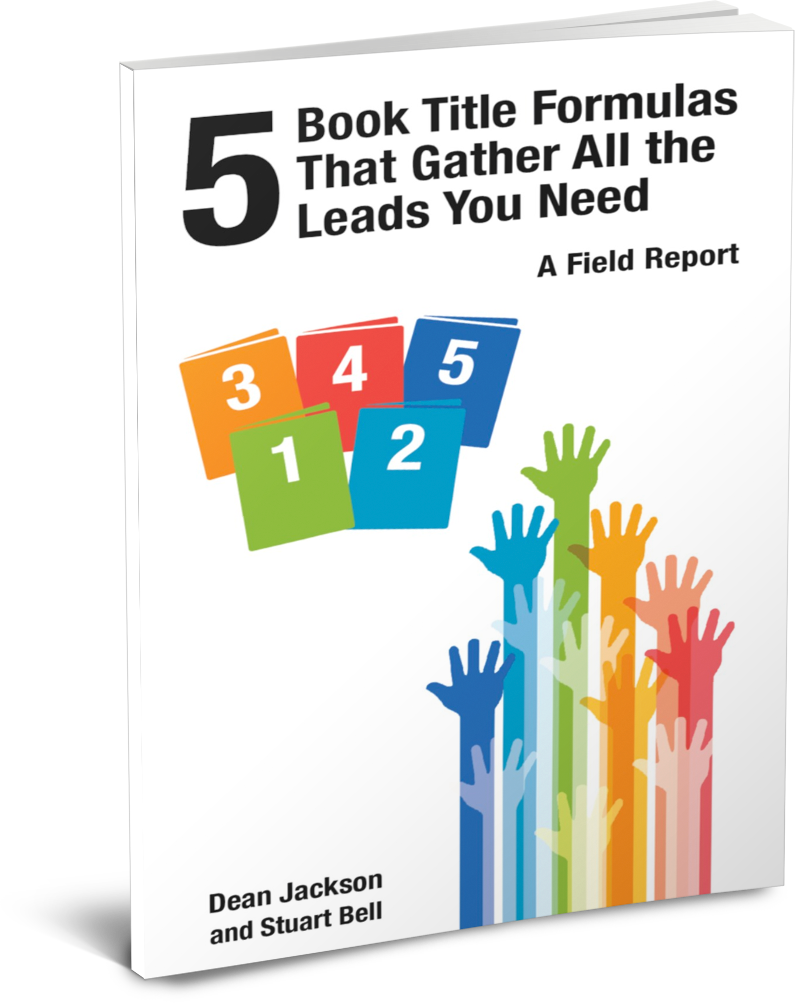
FREE BOOK
Discover the 5 Compelling Book Titles Types that create an ‘I Want That…’ response.
Stage 1- TOFU
At the beginning of the marketing process, you create recognition and curiosity in your product or service. These are often called TOFU strategies (top-of-funnel).
Semrush has reported that a great majority of marketers (95%) concentrate on TOFU strategies, meaning this first stage of the marketing funnel has become the most running choice.
The objective now is to connect with as many potential purchasers as feasible and make them interested in your product or service.
Top-of-funnel KPIs include:
- traffic sources
- organic sessions
- ad impressions
- ad frequency
- pages per session
A few optimal content formats for this stage would be blog articles, social media postings, videos, and compensated digital advertisements.
When creating material for the earliest stages of the marketing funnel, concentrate on creating awareness and stimulating intrigue. This means your content should be educational and informative. You can also employ comedy and narratives to gain attention.
At this point, the aim should not be to convince people to buy your product or service but rather to gain their attention and curiosity about your offer. Producing engaging and educational material will lead to an increase in leads and sales for your marketing tactics.
1. Share Your Brand Story on Social Media
The account of your company is the basis of your advertising and marketing process. The story you want people to relate to your products, services, and advertising.
Studies show brand stories drive ROI. According to Headstream, over half of the people prefer to purchase from companies with a narrative that resonates with them. In addition, almost half of the people will communicate the story with others at a later time.
You can create different types of media to convey your brand’s story. Writing blog posts or crafting social media posts are two options to inform people about your origin story. Create audiovisual content such as videos and podcasts that illustrate the character of your company.
2. Become an Advocate for Causes Your Brand and Customers Care About
Edelman Earned Brand’s research showed that conveying values is just as successful at stimulating a customer’s intention to buy as talking about the product itself.
When your brand has a cause that resonates with your clients, you are more likely to receive their patronage.
Toms is an enterprise created based on the concept of donating. They put one-third of their profits into grassroots organizations working towards long-term positive transformation.
Tom’s has achieved the status of a billion-dollar company by appealing to those eager to create an enhanced world.
You can achieve the same outcome by looking for significant issues for your intended audience and endorsing them with promotional activities.
3. Run Paid Ads
It is essential to include paid advertising in your digital marketing strategy. They not only offer you the chance to reach a bigger number of people but also to specifically target specified groups of people, specific interests and even spots.
eMarketer research has determined that paying for advertising is guaranteed to elevate a brand’s visibility.
There are a variety of paid ad options for your top-of-funnel marketing strategy, including:
- ads on podcasts
- YouTube ads
- ads on social media
- Google ads
Consider where your intended crowd usually goes on the internet when deciding which websites to promote. This study will ensure you aren’t spending your marketing fund on ads that don’t get any responses.
4. Build SEO-Rich Blogs
Research indicates that 6 out of 10 clients express that blog posts are important during the early stages of the sales funnel.
Blogs are a great tool for generating leads as they offer an opportunity to show off your proficiency in the industry and draw in readers who may not have heard of your company.
To boost the impact of your blog posts, incorporate applicable keywords in the whole text.
This will boost your search engine visibility and make it easier for people to discover your blog when researching the topics you’re discussing.
Stage 2 – Evaluation of Alternatives (MOFU)
Once customers have knowledge of a resolution, the subsequent stage is to look into the different options that your article or advertisement has presented. The length of the contemplation period will depend on the type of product which is being considered. Selecting a restaurant could be as straightforward as determining that one prefers Chinese food over Mexican food this evening.
Yet, suppose the client is assessing promotion mechanization programs to help upgrade the business pipeline they constructed. Programs that can need a cost of $1,500 every month are probable to be looked at carefully and exhaustively as an assessment process.
They could look for suggestions, ask for complimentary tests of the various systems they are looking at, engage in online presentations with each company’s representatives, or watch instructional videos to better understand how each system will function.
If you own a bookkeeping operation, consumers would be assessing assorted potential firms to provide services in the middle part of the channel. They may require materials such as pricing references (to figure out typical prices), understanding the accounting scene (e.g., deciding if a single bookkeeper should be employed, a business, and so on.), or deciding on an accountant.
If you’re running a marketing services business, you might create content about:
- how to choose a marketing agency
- agency pricing guides
- whether a company should go contract or hire in-house
These are examples of instructional resources we have created for individuals considering approaching digital marketing businesses.
It is important to remember that people who have reached this stage of the process are more likely to purchase than those just doing initial research. Thus, if you have scanty funds, you don’t need to begin from the outset of the channel. Rather than focusing on all prospects, you can begin by only focusing on those at the end of the purchasing funnel for the most efficient results.
(MOFU)
At this point in the marketing process, your patrons know there is a remedy to their challenge. Consequently, if they continue the process, most will bounce away until their distress is sufficiently great for them to do something about it. Then, they will assess different solutions.
The interest in buying is much higher now than before when people gathered information about their problems instead of looking at possible solutions.
Therefore, here are a few marketing channels you can try:
- BOFU content marketing (competitor alternatives posts, competitor vs. competitor posts, etc.)
- Writing case studies of the product’s best users
- Campaigning for more reviews
- Retargeting ads
- Optimizing pricing pages
Your messaging should focus more on why your solution is the most effective for their problem rather than informing them about the issue itself.
Demonstrate your solution’s special benefits or cost structure that make it better than the alternatives.
Examples of Content at This Stage
To be straightforward, let’s imagine you are running advertising for FreshBooks. In this case, you might:
- Create content for keywords that demonstrate purchase intent, like “best accounting software for small businesses.”
- Bid for branded competitor keywords like “Quickbooks.”
- Create retargeting ads for people who have already visited the pricing page
- Optimize the pricing page by building links to it and internally linking
- Send out surveys to current customers and ask all happy, loyal customers to leave reviews
An actionable suggestion: The best thing about this phase is that it is often the most budget-friendly stage to tailor for as it caters to a superior audience. Make sure to complete all the steps in this list before advancing further.
Stage 3 – Purchase Decision (BOFU)
The buying process is the logical result of the prior three steps. The prospect has acknowledged an issue, examined their alternatives, concluded which one fits their needs the most, and is now ready to purchase.
Optimizing your website to maximize conversions is an excellent way to grow your sales.
You could give customers a chance to try out your product or service with no risk and a guarantee of their money back, making it a very easy decision to purchase.
(BOFU)
At this point, you have almost finished all of the tasks. Now, you must make purchasing as easy as possible to convert the prospect into a paying customer.
To accomplish this, you can deploy various CRO tactics.
Here are just a few conversion rate optimization tactics you can leverage:
- Add a 30-day money-back guarantee
- Offer a free trial (or a $1 trial to prove intent)
- Offer a pay-by-performance pricing model
- Add customer support chat for last-minute objections
- Better yet, add an FAQ section made up of last-minute objections
- Add reviews around your purchase page
A heat map such as CrazyEgg can be employed to display the areas of a website that people are scrolling to, and these data can guide how to eliminate any obstructions.
You have two options: you can go through our guide on conversion rate optimization, or you can hire a specialized CRO consultant. You may wish to check out a variety of versions of your sales/price page to figure out which boosts conversion the most.
Stage 4 – Post-Purchase Behavior
One more thing. The conclusion of purchase does not signify the end of the consumer experience. What happens after the sale is just as important.
Create an onboarding process that’s both considerate and resourceful. Your new customers will have a good first impression and be likely to stay loyal and recommend you to other people. When they trust the product, they tend to advocate for it by giving testimonials and motivating others to buy it.
Conversely, if recent customers are unhappy with their purchase, they will likely ask for refunds, compose scathing reviews and encourage their friends to buy from your rivals.
You don’t have many options to create something that aids in providing an excellent post-purchase experience other than just having an outstanding product. If you have come up with an impressive product that meets a need, customer satisfaction afterward should be guaranteed.
You can take certain steps to promote better customer loyalty after they have made a purchase. For example, you could generate frequently asked questions content, incorporate endorsements from brand evangelists, facilitate customer service access or inquire into the shopping experience.
Guest Post Disclaimer
The views expressed in this post do not represent the views of 90-Minute Books. The information has not been verified and should be considered an opinion. You are always advised to do independent research.

